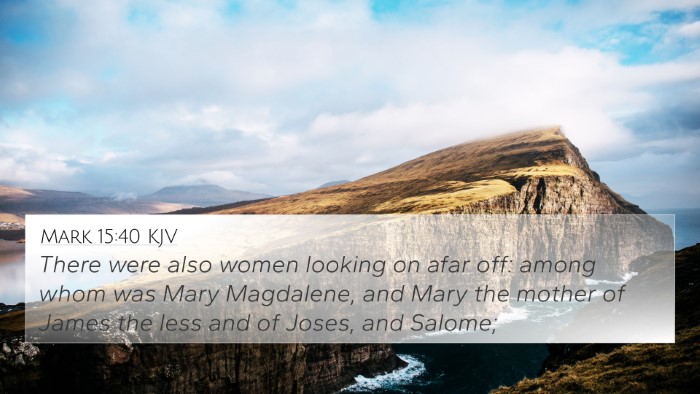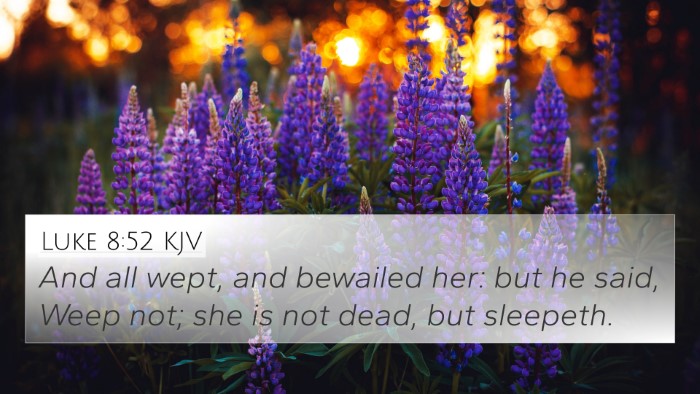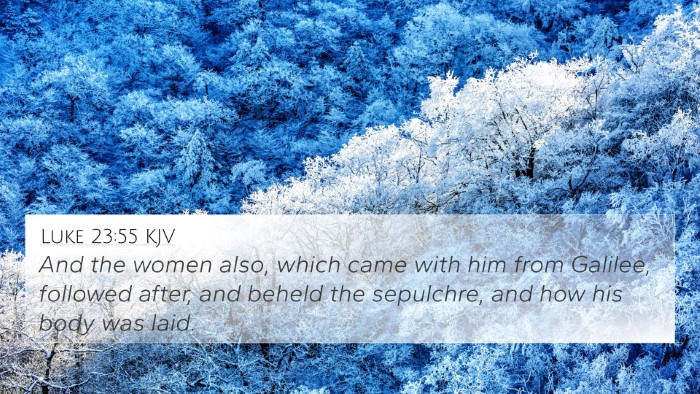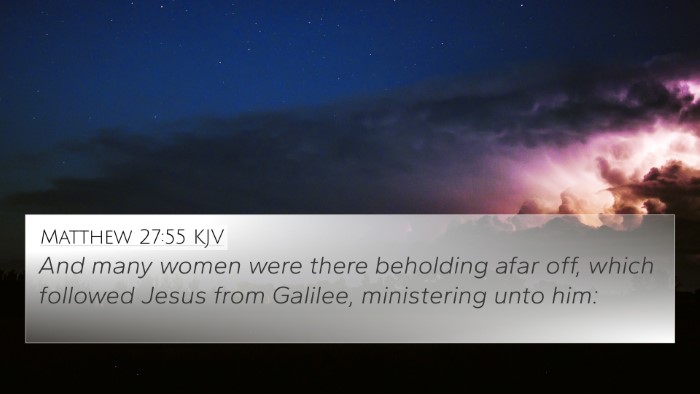Bible Verse: Luke 23:27
Verse Text: "And there followed him a great company of people, and of women, which also bewailed and lamented him."
Summary of Meaning:
In Luke 23:27, we observe a poignant scene during the journey of Jesus to His crucifixion. This verse highlights the emotional response of a multitude, particularly women, who followed Jesus, expressing their deep anguish and lamentation. The reactions of these individuals serve as a symbolic representation of the broader societal consequences of His impending sacrifice and illustrate the profound sorrow that accompanies such a moment of injustice and suffering.
Commentary Insights:
- Matthew Henry: Henry emphasizes the compassion shown by the women, who weep for Jesus. He notes that their mourning underscores the gravity of the situation as they connect emotionally with His suffering. Their lamentation serves as a stark reminder of the human cost involved in the process of redemption.
- Albert Barnes: Barnes elaborates on the cultural significance of women mourning in this context. He suggests that their presence signifies the recognition of Jesus’ innocence and the injustice of His trial and sentencing. Barnes highlights that this lamentation not only reflects love and sympathy but also serves to illustrate a deeper spiritual truth regarding the nature of sin and human responsibility.
- Adam Clarke: Clarke provides a deeper interpretation of who these women might represent. He suggests that they symbolize the faithful followers of Christ who are aware of the spiritual implications of His death. Clarke indicates that their reaction foreshadows the result of Christ’s sacrifice, as their sorrow contrasts sharply with the apathy of the Roman officials and many of the Jewish leaders.
Cross-References:
- Matthew 27:55-56: Similar description of women who ministered to Jesus and observed His suffering.
- Luke 8:2-3: Highlights the women who supported Jesus’ ministry, showing their unwavering loyalty.
- John 19:25: Mentions the presence of Jesus' mother and other women at the crucifixion; amplifying the emotional weight of the scene.
- Isaiah 53:3: Prophesies the suffering Messiah, providing context to the sorrow displayed by the women.
- Lamentations 1:12: A parallel to mourning and suffering, reflecting the pain of loss in a prophetic context.
- Romans 12:15: Encourages believers to "rejoice with those who rejoice" and "weep with those who weep," applicable to the sympathy expressed here.
- Hebrews 12:2: Focuses on Jesus’ sacrifice and how it is a joy set before Him, inviting us to reflect on our responses to His suffering.
Thematic Connections:
- Emotional Responses to Suffering
- Femininity in Faith and Mourning
- The Innocence of Christ vs. Human Injustice
- The Role of Followers in Christ’s Journey
- The Foreshadowing of Redemption
- The Importance of Communal Grieving
- The Women's Support in Jesus’ Ministry
Conclusion:
Luke 23:27 invites readers to not only acknowledge the intense sorrow of those witnessing the suffering of Christ but also to reflect on the broader implications of His sacrifice for humanity. The emotional outpouring displayed by these followers is a crucial aspect of the Passion narrative, reinforcing themes of redemption, love, and the profound impact of Christ’s sacrifice on both personal and communal levels.







